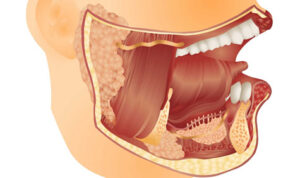The submandibular gland, situated under your jaw, can develop lumps, which may cause concern. Approximately 60% of lumps in the submandibular gland are benign (not cancerous), while the remaining can indicate submandibular gland cancer. These lumps typically occur due to overgrowth of cells in the gland. Additionally, swelling can arise from stones blocking the duct draining the gland, leading to pain in the submandibular gland and possibly resulting in infection, which can restrict routine activity.
Investigation and Treatment of Submandibular Lumps
During the initial consultation, a detailed history is taken, followed by a thorough assessment of the submandibular lymph nodes and gland. A needle may be inserted into the gland to collect a sample of cells from the lump. These cells are then analyzed under a microscope by a pathologist to determine the nature of the swelling, whether it be a submandibular gland tumor or something benign. If stones are suspected, X-rays are often performed first. Occasionally, other tests such as a CT scan, MRI scan, or a sialogram may be required.
Treatment depends on the nature of the lump and the results of the tests. Removal of the swelling is usually recommended, as the exact nature of the lump is often determined after removal and analysis. If the lumps are not removed, most will continue to grow, often becoming cosmetically unacceptable, and may even turn cancerous. Large, cancerous lumps can complicate surgery, making removal more difficult.
Submandibular Gland Surgery Explained
The operation typically involves removing the whole submandibular gland. This is performed under general anaesthetic, meaning you will be asleep throughout the procedure. An incision is made well below the jawline in the neck, usually along a skin crease to minimize scarring. At the end of the operation, a drain (plastic tube) is placed through the skin to prevent blood or fluid from collecting beneath the skin. This tube is generally removed the next day when you can go home.
Potential Complications
- Weakness of the Corner of the Mouth: The nerve that moves the corner of the mouth lies close to the gland and is at risk during surgery. Damage to this nerve can result in weakness at the corner of the mouth, especially noticeable when smiling, and may cause drooling on the affected side. In most cases, the nerve functions normally after surgery, although about 10% of cases may experience temporary weakness lasting a few weeks.
- Numbness and Stiffness of the Neck: Stiffness and numbness of the neck are common and typically resolve spontaneously over a few months. Using moisturizers and creams to soften the scar and skin is beneficial.
- Blood and Saliva Collection: Blood and/or saliva may collect beneath the skin. While usually minor, it may occasionally require a return to the operating theatre to remove the clot.
- Altered Taste: The nerve responsible for taste runs close to the duct of the submandibular gland. Bruising or damage to this nerve can lead to altered taste sensations, which typically recover fully over a few weeks.
- Weakness of the Tongue: Very rarely, the nerve that moves the tongue may be bruised or damaged during surgery, but this usually resolves fully within a few weeks.
In summary, if you notice a swollen submandibular gland, it’s essential to consult a healthcare professional for assessment and potential treatment to ensure the best outcomes.